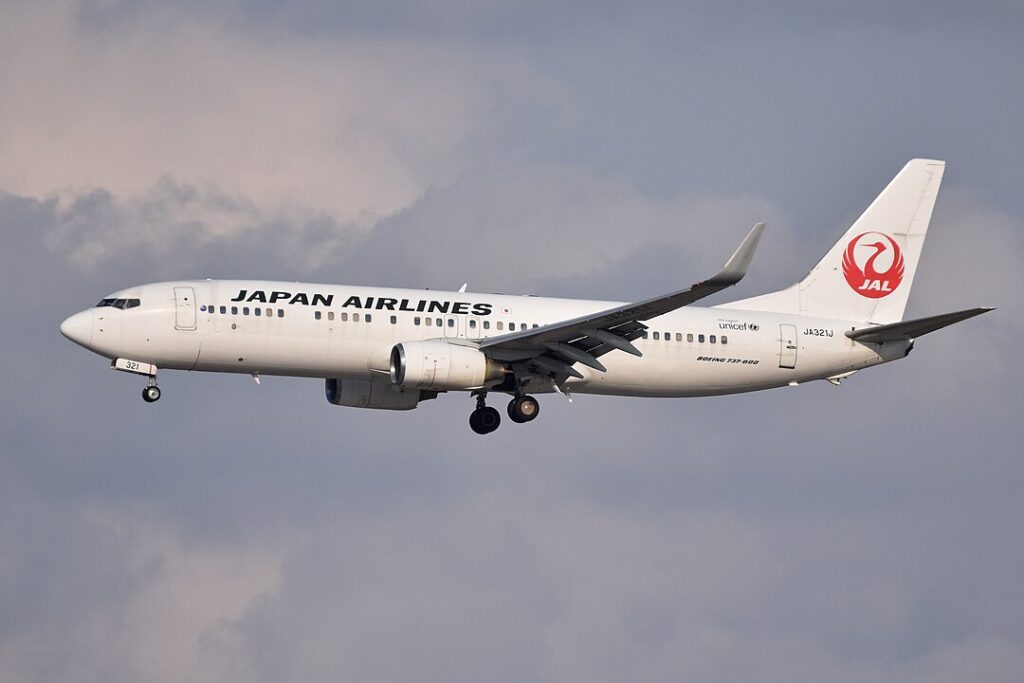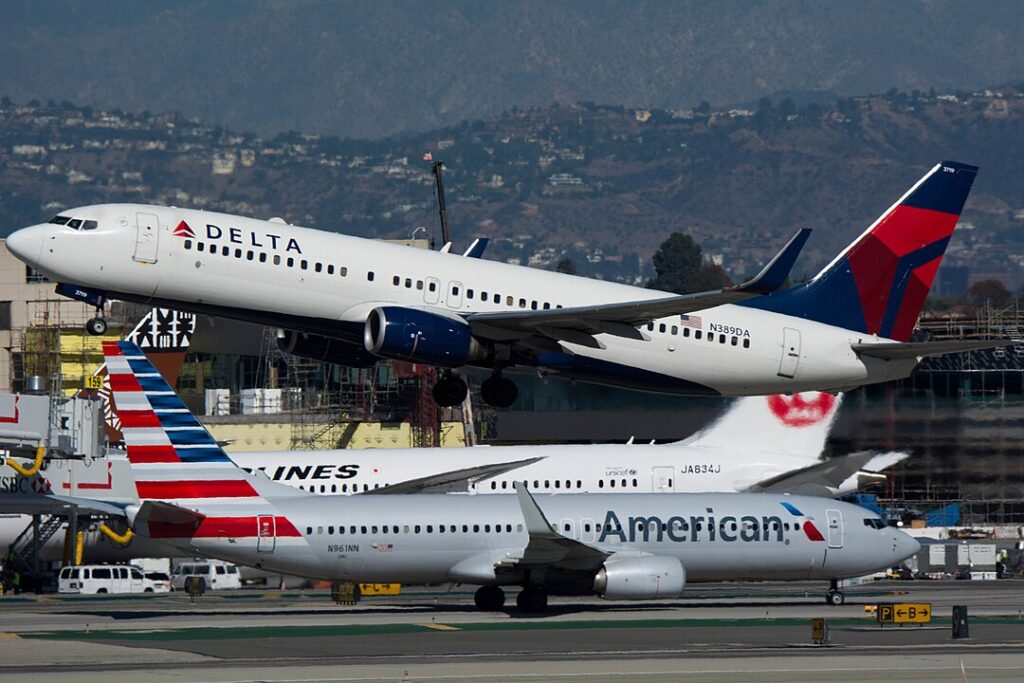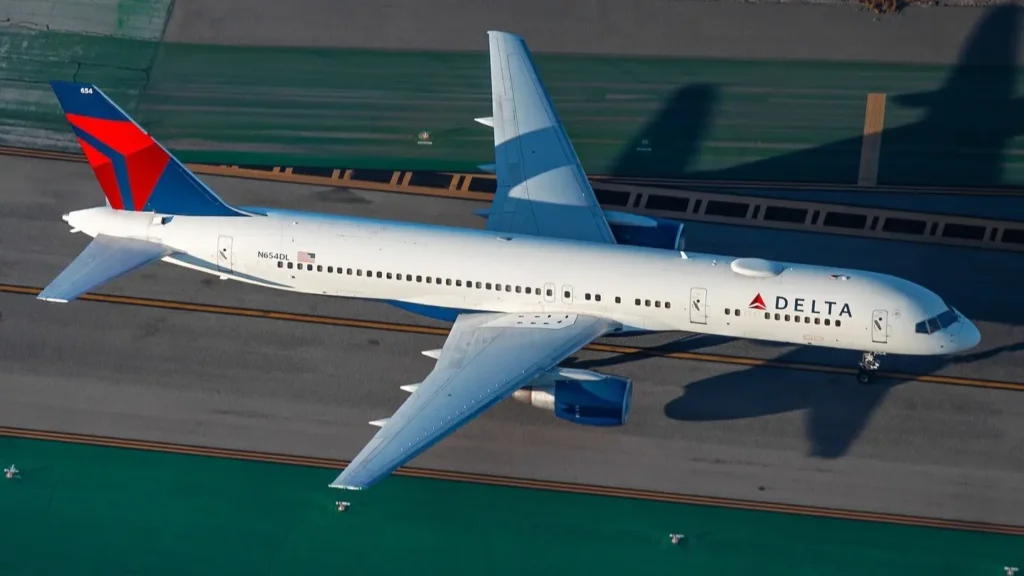
OSAKA— A Japan Airlines (JL) Boeing 737 flight operated by its subsidiary Spring Airlines Japan (IJ) made an emergency landing at Kansai International Airport (KIX) after a cabin pressurization alert. The flight was en route from Shanghai Pudong Airport (PVG) to Tokyo Narita Airport (NRT) when the incident occurred.
Flight JL8696/IJ004, carrying 191 passengers and crew, diverted safely to Kansai. No injuries or medical issues were reported. The aircraft belongs to Spring Airlines Japan, a low-cost unit partially owned by Spring Airlines (9C).
 Photo: By Hawkeye UK – https://www.flickr.com/photos/65001151@N03/48515051067/, CC BY-SA 2.0, https://commons.wikimedia.org/w/index.php?curid=81317446
Photo: By Hawkeye UK – https://www.flickr.com/photos/65001151@N03/48515051067/, CC BY-SA 2.0, https://commons.wikimedia.org/w/index.php?curid=81317446Japan Airlines Emergency Landing
The incident occurred Monday evening (June 30, 2025) when the aircraft’s onboard systems detected an abnormality in the pressurization system. Cabin pressure is critical at high altitudes to maintain breathable air for passengers.
According to Kyodo News, the pilot suspected a potential depressurization and immediately declared an emergency with air traffic control.
As a precaution, the flight diverted from its original route to land at Kansai International Airport (KIX), located near Osaka. Passengers onboard reported that around 6:40 p.m., the aircraft began a rapid descent of approximately 7,000 meters.
Roughly 10 minutes into the descent, oxygen masks were automatically deployed, and the crew made an emergency announcement over the intercom.
Though the flight bore the Japan Airlines (JL) number, the aircraft and operational control belonged to Spring Airlines Japan (IJ). Japan Airlines is the majority shareholder in Spring Airlines Japan, while the Chinese carrier Spring Airlines (9C) owns a 33% minority stake. However, Spring Airlines clarified it does not participate in operational decisions for its Japanese affiliate.
The aircraft involved was a Boeing 737, commonly used for short to medium-haul routes across Asia. Japan Airlines later confirmed the ownership and operational assignment to its subsidiary, which operates independently despite shared branding and codeshare agreements.
 Representative Image | Photo: By Glenn Beltz from Goleta, USA – DSC_6369, CC BY 2.0, https://commons.wikimedia.org/w/index.php?curid=44952816
Representative Image | Photo: By Glenn Beltz from Goleta, USA – DSC_6369, CC BY 2.0, https://commons.wikimedia.org/w/index.php?curid=44952816Passenger Support and Investigation
Following the emergency landing, all passengers were provided assistance by the airline. A passenger named Cyue posted on social media that Japan Airlines offered ¥15,000 (approx. $93) as transportation compensation and arranged overnight accommodation for affected travelers.
Japanese aviation authorities, including the Osaka Civil Aviation Bureau under the Ministry of Land, Infrastructure, Transport and Tourism, are currently investigating the root cause of the cabin pressure alert. No technical conclusions have been released as of Tuesday.
Rapid descent procedures are standard in aviation when cabin pressure fails or drops unexpectedly. The deployment of oxygen masks ensures passengers have access to breathable air until the aircraft reaches a lower, safer altitude.
The crew followed all emergency protocols, leading to a safe landing with no medical complications reported among passengers.
 Photo: Cado Photo
Photo: Cado PhotoSimilar Incident
Delta Air Lines (DL) Flight 1576 made an emergency landing at Cecil Airport, Jacksonville (VQQ), after a cabin depressurization incident mid-flight from Hartsfield-Jackson Atlanta International Airport (ATL) to Orlando International Airport (MCO).
The Boeing 757-200, carrying 206 passengers, initiated an urgent descent after oxygen masks deployed and passengers reported a warm cabin and smoke-like conditions.
Delta Air Lines (DL) Flight 1576 departed from Atlanta (ATL) on June 9, 2025, headed to Orlando (MCO), when a sudden depressurization event forced the crew to divert to Cecil Airport (VQQ), a joint civilian-military facility not typically used for commercial flights.
Approximately midway through the flight, passengers experienced an abrupt change in cabin conditions. Reports describe an unusually warm atmosphere, followed by the sudden release of oxygen masks. Some passengers sensed smoke-like conditions, although Delta later clarified there were no signs of fire.
Peter Stewart, a seasoned traveler seated in the emergency exit row, recounted the moment as the most frightening experience of his four decades of flying. Stewart described a swift drop in altitude and a deafening silence onboard as the Boeing 757 executed a steep descent toward Jacksonville.
Despite the severity of the emergency, the flight crew managed a highly controlled descent and landing at VQQ. Stewart praised the professionalism of the cockpit crew, attributing their composed execution to extensive training, possibly with military backgrounds.
“The way the aircraft banked and descended — it was clear they knew exactly what they were doing,” said Stewart. Passengers reportedly applauded upon touchdown, visibly relieved by the safe outcome.
The Federal Aviation Administration (FAA) has launched a formal investigation into the cabin depressurization. No injuries were reported among the passengers or crew, and the aircraft was safely evacuated upon landing.
Stay tuned with us. Further, follow us on social media for the latest updates.
Join us on Telegram Group for the Latest Aviation Updates. Subsequently, follow us on Google News
Japan Airlines Flight Aborts Takeoff at Haneda After Runway Deviation, Hits Light
The post Japan Airlines Shanghai to Tokyo Flight Makes Emergency Landing at Kansai Airport appeared first on Aviation A2Z.







